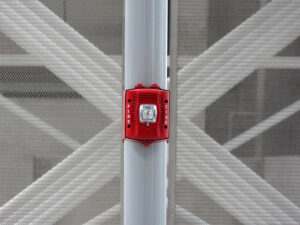Fire Safety in Educational Institutions
Educational institutions serve as hubs of learning, innovation, and community engagement. However, they also harbor risks, especially when it comes to fire hazards. In such densely populated settings, the safety of students, faculty, and staff must be the top priority.... Read More The post Fire Safety in Educational Institutions appeared first on Fireline.


Fire safety is paramount in educational institutions to ensure the health and safety of students and staff.
Educational institutions serve as hubs of learning, innovation, and community engagement. However, they also harbor risks, especially when it comes to fire hazards. In such densely populated settings, the safety of students, faculty, and staff must be the top priority. In this article, we are going to delve into why fire safety is crucial in schools and universities, explore appropriate fire safety systems for these institutions, and provide practical tips for individuals to practice fire safety in their everyday lives on campus.
Appropriate Fire Safety Measures for Schools and Universities
Effective fire safety in educational institutions requires a multifaceted approach, incorporating various systems and strategies to mitigate fire risks and facilitate a timely response in case of emergencies. Some key fire safety systems suitable for schools and universities include:
- Fire Detection and Alarm Systems: Early detection of fire is critical for prompt evacuation and fire containment. Installing smoke detectors, heat detectors, and fire alarm systems throughout the premises ensures timely alerts in the event of a fire outbreak.
- Fire Suppression Systems: Automatic fire suppression systems, such as sprinklers, can help contain and extinguish fires before they escalate. These systems are especially valuable in areas with high fire risk, such as laboratories and kitchens.
- Emergency Lighting and Exit Signs: In the event of a fire, visibility may be compromised due to smoke or power outages. Emergency lighting and illuminated exit signs guide occupants to safety routes, facilitating orderly evacuation.
- Fire Evacuation Plans and Drills: Comprehensive fire evacuation plans tailored to the institution’s layout and regular evacuation drills to familiarize occupants with emergency procedures and ensure swift evacuation in real emergencies.
- Fire Safety Training: Providing fire safety training to students, faculty, and staff enhances awareness of fire hazards, proper use of firefighting equipment, and evacuation protocols, empowering individuals to respond effectively to fire emergencies.
- Maintenance and Inspection: Regular maintenance and inspection of fire safety systems and equipment are essential to ensure their proper functioning. This includes testing alarms, servicing extinguishers, and promptly addressing any potential fire hazards.
By implementing these fire safety systems and practices, schools and universities can significantly reduce the risk of fire incidents and mitigate their potential consequences.
Practical Tips for Fire Safety on Campus
In addition to institutional fire safety measures, individuals can take proactive steps to enhance fire safety in their everyday lives on campus. Here are some practical tips for students, faculty, and staff:
- Stay Informed: Familiarize yourself with the location of fire exits, alarm pull stations, and firefighting equipment in your building. Be aware of the institution’s fire safety policies and procedures.
- Keep Exits Clear: Ensure that corridors, stairways, and exits are always free from obstructions. Blocked exits can impede evacuation efforts during a fire emergency.
- Practice Safe Cooking: If cooking facilities are available on campus, exercise caution when using stoves, ovens, or other cooking appliances. Never leave food that is cooking unattended, and promptly address any grease or oil spills to prevent potential fire hazards.
- Handle Electrical Appliances Safely: Avoid overloading electrical outlets and extension cords. Inspect electrical appliances regularly for signs of damage or malfunction and promptly report any issues to maintenance personnel.
- Dispose of Waste Properly: Properly dispose of combustible materials, such as paper, cardboard, and waste packaging, in designated receptacles. Avoid storing flammable materials near heat sources or electrical equipment.
- Report Fire Hazards: Be vigilant for potential fire hazards, such as frayed wires, overheated equipment, or blocked fire exits, and report them to the appropriate authorities immediately. Prompt action can prevent fire incidents from occurring.
By incorporating these simple yet effective practices into their daily routines, individuals can contribute to a safer campus environment for everyone.
Fire Protection Services from Fireline
Whether you need smoke detectors, fire extinguishers, or an automatic sprinkler system installed at your commercial property, Fireline has you covered. We have been protecting people and property from fire damage since 1947—and our experience shows in our excellent work! We are known for our superb customer service, our expertise, and our reliability. For more information on how we can help your residential or commercial property, visit us online or give us a call at (800) 553-3405. We are in Baltimore, MD, with a second office in Leesburg, VA. For more fire safety tips, be sure to follow us on Facebook, Twitter, and LinkedIn.
The post Fire Safety in Educational Institutions appeared first on Fireline.


 oustfire
oustfire 






